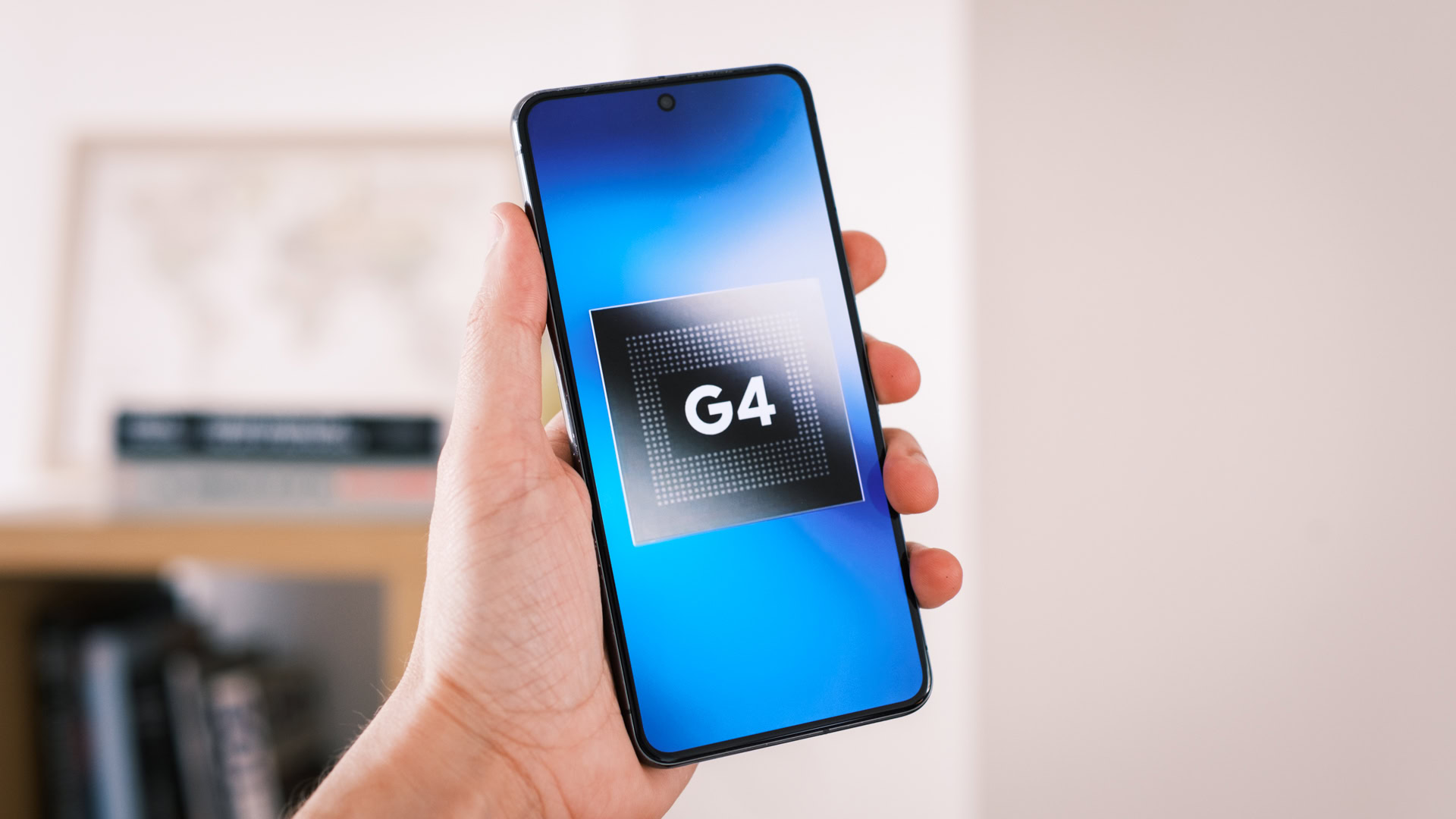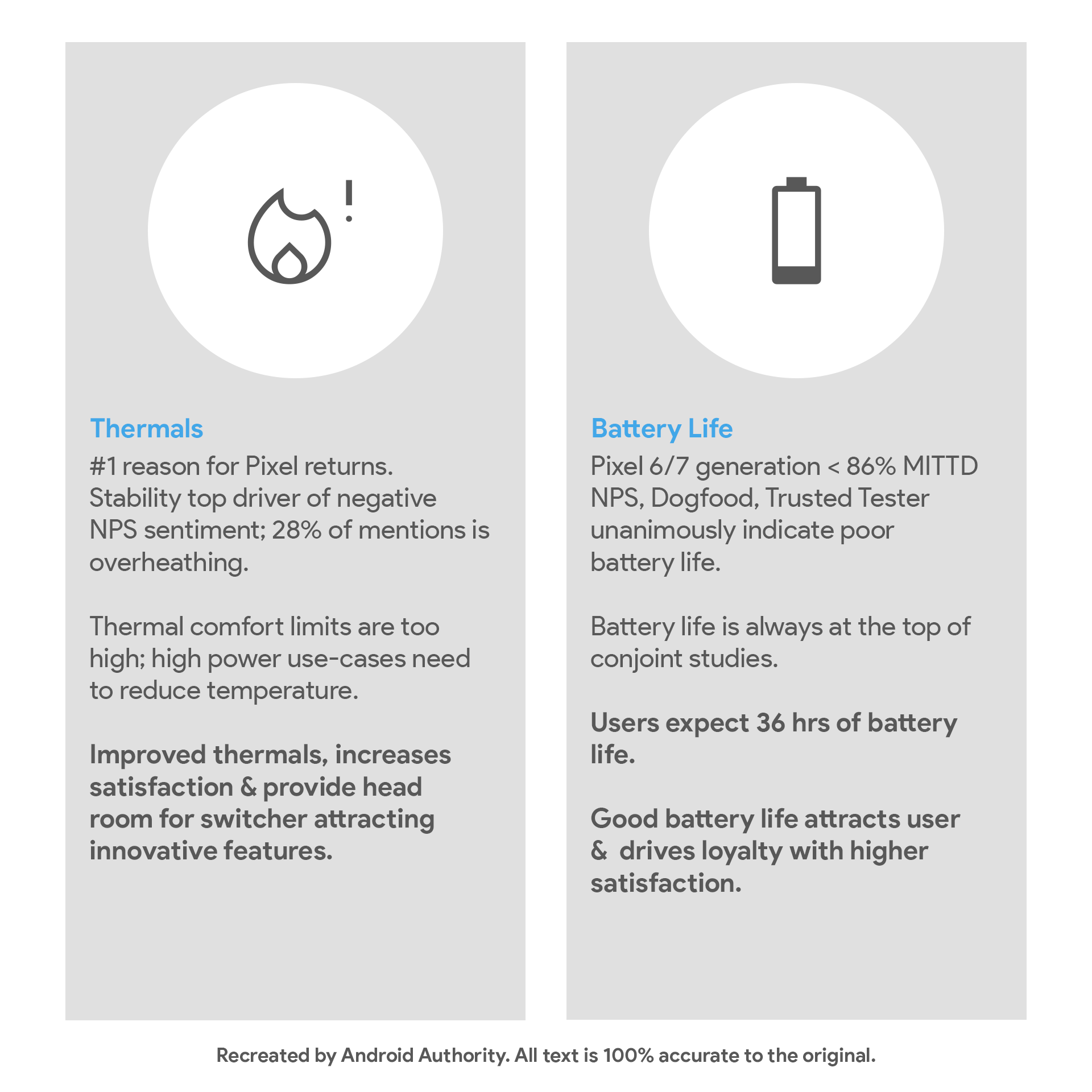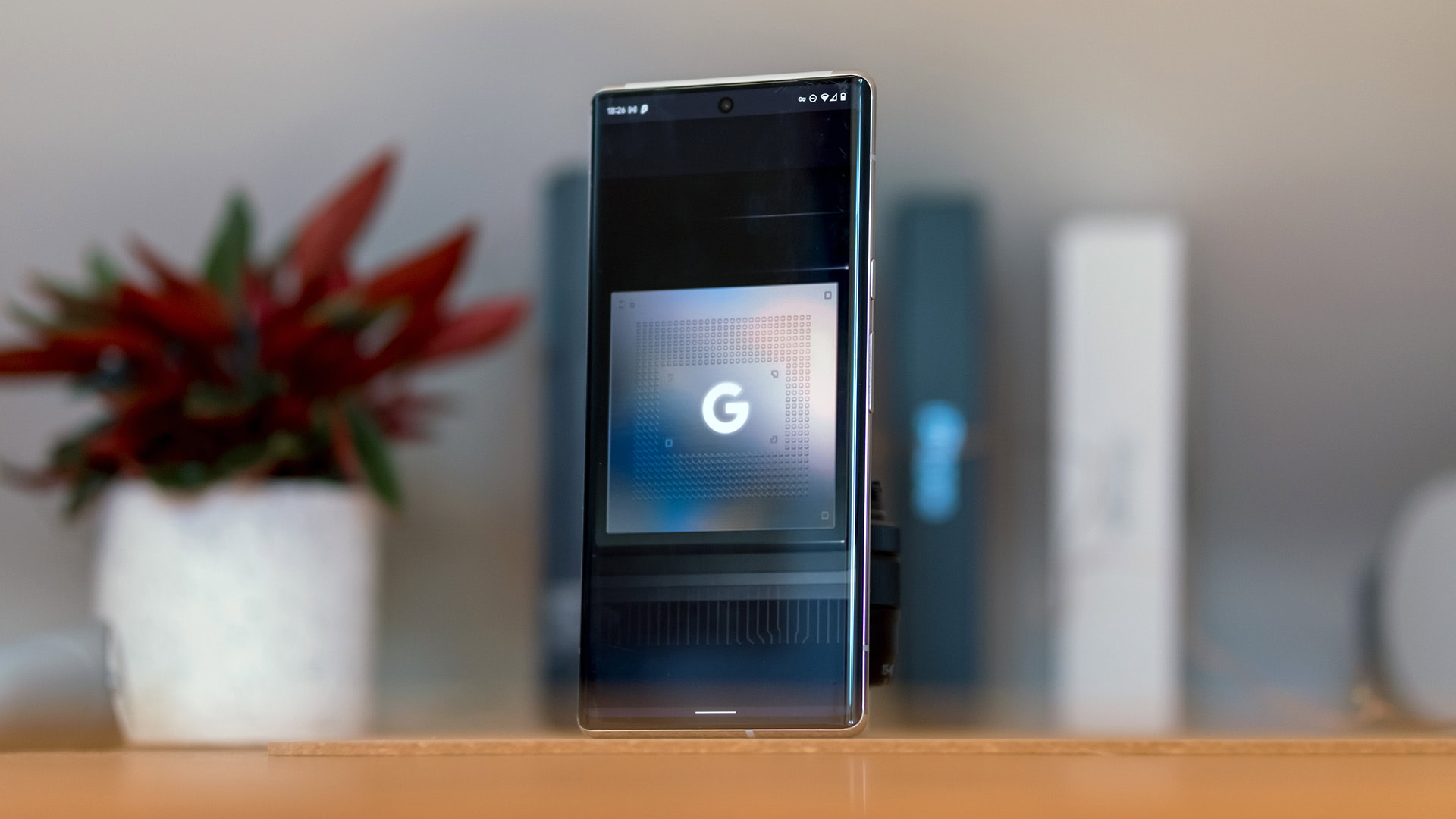Tech
Google Pixel 11’s Tensor G6 might be a downgrade, but could also fix some big Pixel phone flaws

TL;DR
- Google’s previous “Tensor based Pixel programs have not met its financial targets.”
- Google Tensor G6 is primarily focused on reducing the price of the chip, as well as making it run cooler and more efficiently.
- The GPU will lose its ray-tracing abilities, while the CPU gets a slight upgrade.
Google’s Tensor chips have failed to impress performance enthusiasts. Even after four generations, the chips aren’t quite what many had hoped they could be (check out our in-depth Tensor G4 testing for the full picture) and remain a hot topic of discussion in the community. In our previous reporting, we’ve shown how the next-gen Tensor G5 promises to deliver improvements in power efficiency and thermals thanks to the superior TSMC manufacturing process, but its specs still leave a lot to be desired compared to the competition.
Unfortunately, that seems likely to remain the case for at least one more generation, as the Tensor G6, due to be released with the Pixel 11, will bring rather small upgrades. It might even be a downgrade in some areas, but that’s actually for a good reason.
Thanks to an unprecedented leak from Google’s gChips division, Android Authority has viewed documents describing the specifications, as well as the motivations behind Google’s upcoming Tensor G6 chip.
Before we get to the specs of Tensor G6, we should talk a bit about the goals that ultimately led Google to design the chip the way it did. In my opinion, this is the most interesting part of this entire leak from gChips — nobody at Google would ever openly talk about these things. The quotes in the sections below are taken directly from the documents, in order to preserve as much information as possible.
You’re reading an Authority Insights story. Discover Authority Insights for more exclusive reports, app teardowns, leaks, and in-depth tech coverage you won’t find anywhere else.
Of course, it’s about the money
Robert Triggs / Android Authority
The document we viewed starts with a very interesting piece of information — “Tensor based Pixel programs have not met our financial targets.” While a fairly vague statement, it implies that one of the reasons Google decided to switch to custom chips was potentially lower costs. It’s surprising that even without a giant profit-driven company like Qualcomm in the way, Google has failed to hit the goal. Unsurprisingly, this is one of the areas that’s the focus of optimization for the Tensor G6.
The document also reveals Google’s new financial goal — “AP [Application Process — in other words, the SoC] target is ~$65 to make this business viable.” In comparison, Qualcomm’s recent flagship chips are rumored to cost around $150. This humungous difference makes it even more surprising that Google failed to meet its financial goals for the project before, even if the price was a bit higher. Obviously, there are some upfront costs associated with making a custom chip, but with that big of a per-unit price difference, it suggests something has gone wrong.
What do you think about Google’s vision for the future of Tensor?
381 votes
Google is aware that Tensor chips aren’t very good
As the title of this section suggests, Google knows about the most common complaints about its chips — bad thermals and poor battery life. Thankfully, it intends to improve the Tensor G6 in these areas. I’ve recreated a part of a graphic from the document just to show how Google talks about these problems (and because it is kinda funny to see it admit the issue).

Unfortunately, we lack the full data behind this graphic, but it still provides some interesting insights. First, overheating was the leading cause of returns of Tensor-based Pixel devices, with 28% of customer complaints being about the thermals! That kind of response tracks with our own polling, too.
Google knows that battery and heat are common complaints about its Tensor series.
Google intends to improve the situation by finding ways to reduce the temperature in high-power use cases. While this is a fairly vague thing to say, we’ve already seen at least one way it will achieve this: the new “Cinematic Rendering Engine” in the chip will reduce the power consumption of video recording with blur by around 40%, which means considerably less heat being emitted.
The second part of the graphic is even more interesting because it shows Google knew how bad the battery life of early Tensor-based Pixels really was — and provides us with a nice figure to back that. Apparently, less than 86% of Pixel 6/7 users made it through the day! The slide doesn’t provide us with any concrete ways Google intends to amend this, but it’s clear it will also be one of the main goals of the Tensor G6.
So how does that translate to the Tensor G6’s specs?

Robert Triggs / Android Authority
With all that in mind, we can take a look at what Google actually has in store for the Tensor G6. The main idea seems to be to reduce die area (which reduces cost) while not regressing in terms of features compared to the Tensor G5. The Pixel 10’s chip is pretty massive at 121 mm2. To put that into perspective, the Apple A18 Pro, built on the same process node, is only 105 mm2.
The goal for Tensor G6 is to hit 105 mm2, including the 4% area saving from TSMC’s newer N3P process node (G5 uses N3E). In order to hit that size, virtually all teams had to make sacrifices.
Tensor G6 will have a GPU meant for the original Tensor G4.
One of the clearer examples of this is the GPU. Google initially intended to use a yet-to-be-released IMG EXT GPU, but due to delays, it decided against it. Instead, two options were considered: first, to use the same IMG DXT as in Tensor G5, but without ray-tracing to save area, or to use the solution in the chip codename “Redondo,” which was initially meant to be the Tensor G4 — IMG CXT without ray-tracing. It was eventually decided Google would go for the latter, which leads to a funny situation: the Tensor G6 will have the GPU that was meant to be in the Tensor G4! While the performance is comparable (at least in Google’s projections), this is still, at best, a sidewards step, all for a ~12% die area saving. I compiled the GPU specs in the table below:
| Tensor G4 (“zumapro”) | “Redondo” (canceled Tensor G4) | Tensor G5 (“laguna”) | Tensor G6 (“malibu”) | |
|---|---|---|---|---|
|
GPU |
Tensor G4 (“zumapro”)
Arm Mali-G715 (7 cores) |
“Redondo” (canceled Tensor G4)
IMG CXT (3 cores) |
Tensor G5 (“laguna”)
IMG DXT (2 cores) |
Tensor G6 (“malibu”)
IMG CXT (3 cores) |
|
Frequency |
Tensor G4 (“zumapro”)
900 MHz |
“Redondo” (canceled Tensor G4)
? |
Tensor G5 (“laguna”)
1100 MHz |
Tensor G6 (“malibu”)
1100 MHz |
|
Ray tracing |
Tensor G4 (“zumapro”)
Not supported |
“Redondo” (canceled Tensor G4)
Not supported |
Tensor G5 (“laguna”)
Supported |
Tensor G6 (“malibu”)
Not supported |
|
GPU Virtualization |
Tensor G4 (“zumapro”)
Not supported |
“Redondo” (canceled Tensor G4)
Not supported |
Tensor G5 (“laguna”)
Supported |
Tensor G6 (“malibu”)
Not supported |
|
Die area |
Tensor G4 (“zumapro”)
14.7 mm^2 (4LPE) |
“Redondo” (canceled Tensor G4)
14.82 mm^2 (N3E) |
Tensor G5 (“laguna”)
16.6 mm^2 (N3E) |
Tensor G6 (“malibu”)
14.1 mm^2 (N3P) |
Similar area savings have been made all around the chip. For example, the DSP (digital signal processor) will drop one of its cores in order to save space, and the SLC (system-level cache) will be cut in half to 4MB.
One area that seemingly avoided getting shrunk is the CPU, but don’t expect any major upgrades there. It’s important to mention that the leaked documents were created before the layout was fully finalized, so it might turn out slightly differently.
Google experimented with many configurations and preliminarily settled on using one big Cortex-X930 core (that has yet to be announced) and six Cortex-A730 cores, two of which are configured to be slightly faster (unfortunately, the details here are scarce). Google decided against the use of Cortex-A5xx class cores because they are less efficient. I compiled a table of the CPU specs below:
| Tensor G3 (“zuma”) | Tensor G4 (“zumapro”) | Tensor G5 (“laguna”) | Tensor G6 (“malibu”) | |
|---|---|---|---|---|
|
Big cluster |
Tensor G3 (“zuma”)
1x Arm Cortex-X3 |
Tensor G4 (“zumapro”)
1x Arm Cortex-X4 |
Tensor G5 (“laguna”)
1x Arm Cortex-X4 |
Tensor G6 (“malibu”)
1x Arm Cortex-X930 |
|
Mid cluster |
Tensor G3 (“zuma”)
4x Arm Cortex-A715 |
Tensor G4 (“zumapro”)
3x Arm Cortex-A720 |
Tensor G5 (“laguna”)
5x Arm Cortex-A725 |
Tensor G6 (“malibu”)
6x Arm Cortex-X730 |
|
Little cluster |
Tensor G3 (“zuma”)
4x Arm Cortex-A510 |
Tensor G4 (“zumapro”)
4x Arm Cortex-A520 |
Tensor G5 (“laguna”)
2x Arm Cortex-A520 |
Tensor G6 (“malibu”)
– |
Unfortunately, the specs alone don’t tell us much about what we can expect in terms of performance. However, just the fact that Google is reducing the core count again means it’s unlikely the new chip will be much faster than its predecessor.
Tensor isn’t a traditional SoC

Ryan Haines / Android Authority
You might look at the specs and be disappointed that Google is not making a chip that will be competitive, at least on paper, with cutting-edge chips like Qualcomm’s Snapdragon 8 Elite, but that’s not the point of Tensor. Having a custom chip lets Google build various features directly into the chip.
As we’ve already revealed, the Tensor G6 might provide the Pixel 11 with some exciting features, such as 100x zoom and “Ultra Low Light video.” Google’s goal was always to improve user experience, not dominate benchmarks, and that looks set to be the case right out to the Pixel 11, at least.
NOTE: This article previously discussed “NPS” as possibly being an abbreviation for “new Pixel switchers.” However, this more than likely stands for “net promoter score,” which is an industry standard metric for customer satisfaction. Android Authority regrets this error.









